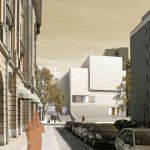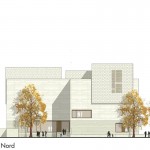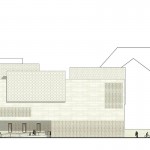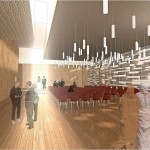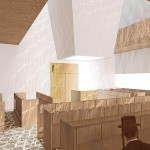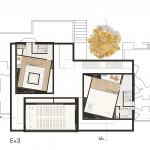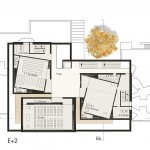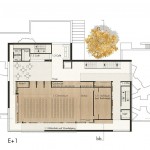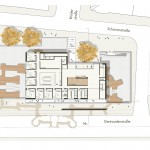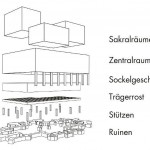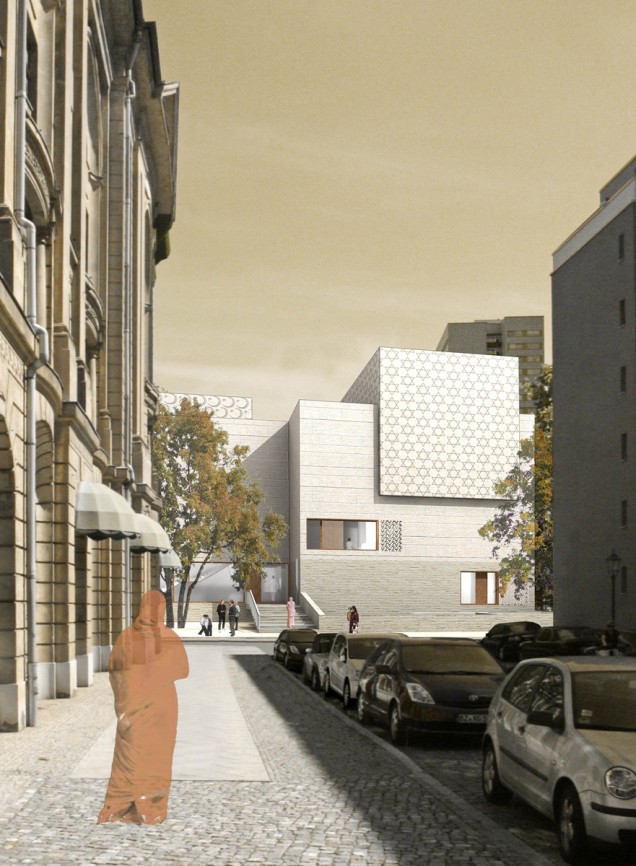
Bethaus am Petriplatz, Berlin
Bethaus am Petriplatz, Berlin, Wettbewerb 2012
Transzendenz und Spiritualität als übergeordnete Erfahrungen können über die sinnliche Wahrnehmung hinaus durch Licht als Gestaltungselement verstärkt werden. Das Zusammenspiel von Tages- und Kunstlicht mit Materialität, Haptik, Lichtführung und Lichtfarbe prägt diese Spiritualität, die nicht rational oder akademisch erklärbar ist. In der Würde der schlichten Räume liegt das verbindende Element der drei großen monotheistischen Weltreligionen. In einem heterogenen städtischen Umfeld, geprägt von Verkehrslärm, anonymer Maßstablosigkeit sowie mangelnder Identität, ist das Bet- und Lehrhaus bewusst als introvertierte Architektur mit reduzierter, werthaltiger Materialität und mit sparsamen Öffnungen nach außen konzipiert. Über dem archäologischen Grabungsfeld, auf begrenzter Grundfläche am historisch bedeutsamen Ort, entwickelt sich eine in Schicht(ung)en organisierte Architektur: Den drei monotheistischen Weltreligionen wird mit paritätischer Verteilung ein Raumgefüge angeboten, das über Foyer und Verwaltung im Erdgeschoss, dem Zentralraum der Begegnung und Cafe im 1. Obergeschoss sowie mit den drei Bethäusern und Emporen in Teilen des 2. Obergeschosses organisiert ist. Dieses kompakte „Raum in Raum“-Konzept zoniert die Sockelzone, eine allumschließende Hülle und kubische, in Höhen versetzte Beträume in unterschiedlicher Ausformung bei gleicher Materialität.
House of Prayer and Learning on Petriplatz, Berlin, Competition 2012
Transcendence and spirituality as higher-level experiences can be reinforced beyond sensuous experience by means of light as a design element. The interaction of daylight and artificial light with materiality, haptics, lighting and light colour characterises this spirituality, which is not rationally or academically explainable. In the dignity of the simple rooms lies the connecting element of the three great monotheistic world religions. In a heterogeneous urban environment, stamped by traffic noise and anonymous proportionality as well as a lack of identity, the House of Prayer and Learning is consciously conceived as introverted architecture with reduced, valuable materiality and small openings to the exterior. Above the archaeological excavation site, on restricted ground at a historically important place, architecture develops in organised shifts and layers: a spatial structure is being offered on a parity basis to the three monotheistic world religions. It has a foyer and the administration on the ground floor, the central meeting room and cafe on the first floor, and the three prayer areas and galleries in parts of the second floor. This compact “room-in-room” concept divides a base zone, an allembracing sheath and cube-shaped prayer rooms offset in height and in a variety of shapes with the same materiality.
